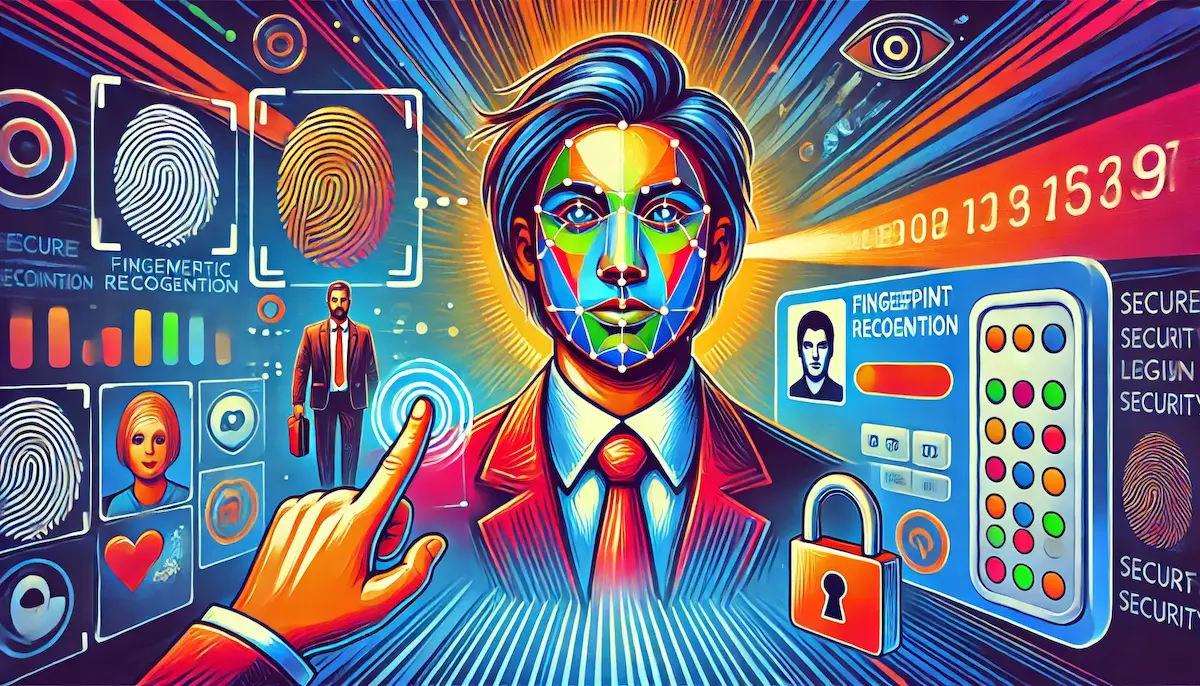Biometric authentication is a security process that verifies an individual’s identity based on unique biological traits. Unlike traditional methods that rely on passwords or PINs, biometric authentication uses physical or behavioral characteristics, such as fingerprints, facial features, voice patterns, and more. This technology is increasingly popular due to its ability to provide a higher level of security and convenience.
What is Biometric Authentication?
Biometric authentication involves capturing a person’s biometric data, converting it into a digital format, and comparing it to a stored template in a database. If the data matches the template, access is granted. This process leverages the uniqueness of biometric traits to ensure that only authorized individuals can access secured systems or information.
Types of Biometric Authentication
Fingerprint Recognition
Fingerprint recognition is one of the most common forms of biometric authentication. It involves scanning a person’s fingerprint and comparing the unique patterns of ridges and valleys to a stored template. This method is widely used in smartphones, access control systems, and law enforcement.
Facial Recognition
Facial recognition technology analyzes the unique features of a person’s face, such as the distance between the eyes, the shape of the cheekbones, and the contour of the lips. This method is commonly used in mobile devices, airports, and public security systems.
Iris Recognition
Iris recognition scans the unique patterns in the colored ring of an individual’s eye. This method is highly accurate and is used in high-security environments like government buildings and research labs.
Voice Recognition
Voice recognition technology identifies individuals based on their unique voice patterns, including pitch, tone, and rhythm. This method is used in phone-based banking, customer service systems, and smart home devices.
Hand Geometry
Hand geometry measures the shape and size of a person’s hand, including the length and width of the fingers and the overall structure. This method is less common but is used in certain access control systems and timekeeping applications.
Behavioral Biometrics
Behavioral biometrics analyze patterns in human activities, such as typing rhythm, gait, or even mouse movements. This method is emerging as a complement to traditional biometric methods, providing continuous authentication.
Benefits of Biometric Authentication
Enhanced Security
Biometric traits are unique to each individual, making it extremely difficult for unauthorized users to replicate or forge them. This significantly reduces the risk of identity theft and unauthorized access.
Convenience
Biometric authentication eliminates the need to remember passwords or carry physical tokens. Users can simply use their fingerprint, face, or voice to gain access, making the process quicker and more user-friendly.
Non-Transferable
Unlike passwords or access cards, biometric traits cannot be easily shared or transferred. This ensures that only the authorized person can access the secured system or information.
Improved User Experience
Biometric systems offer a seamless and intuitive user experience. For instance, unlocking a smartphone with a fingerprint or face scan is faster and more convenient than entering a PIN.
Challenges of Biometric Authentication
Privacy Concerns
The collection and storage of biometric data raise significant privacy concerns. If biometric data is compromised, it cannot be changed like a password. Organizations must ensure that biometric data is securely stored and protected against breaches.
Accuracy and Reliability
Biometric systems must be highly accurate to avoid false positives (granting access to unauthorized users) and false negatives (denying access to authorized users). Factors like lighting conditions, injuries, or changes in physical appearance can affect accuracy.
Cost
Implementing biometric authentication systems can be expensive, particularly for advanced methods like iris recognition. The cost includes the technology itself and the infrastructure needed to support it.
Ethical and Legal Issues
The use of biometric data involves ethical and legal considerations. Regulations like the General Data Protection Regulation (GDPR) impose strict requirements on the use and protection of biometric data. Organizations must navigate these regulations to ensure compliance.
Applications of Biometric Authentication
Mobile Devices
Biometric authentication is widely used in smartphones and tablets for unlocking devices, authorizing payments, and accessing secure applications. Fingerprint and facial recognition are the most common methods.
Banking and Finance
Financial institutions use biometric authentication to enhance security for online banking, ATM access, and in-branch services. Voice recognition and fingerprint scanning are popular choices in this sector.
Healthcare
Biometric systems are used in healthcare to secure access to patient records, authenticate medical staff, and manage access to controlled substances. Ensuring patient privacy and data security is critical in this field.
Government and Law Enforcement
Government agencies use biometric authentication for border control, passport verification, and national ID programs. Law enforcement uses it for criminal identification and access control in secure facilities.
Corporate Security
Organizations use biometric authentication to secure physical access to buildings, authenticate employees for computer systems, and manage time and attendance. This enhances overall security and operational efficiency.
Future of Biometric Authentication
Integration with AI and Machine Learning
Artificial intelligence and machine learning are enhancing the accuracy and reliability of biometric systems. These technologies can analyze vast amounts of data and improve the system’s ability to recognize and authenticate users.
Multimodal Biometrics
Combining multiple biometric methods (e.g., fingerprint and facial recognition) can enhance security and accuracy. Multimodal biometrics reduce the likelihood of false positives and negatives.
Continuous Authentication
Continuous authentication uses behavioral biometrics to monitor and verify a user’s identity throughout a session. This provides ongoing security, reducing the risk of unauthorized access during a session.
Biometric Payments
The use of biometrics for payment authentication is growing. Fingerprint and facial recognition are being integrated into payment systems, providing secure and convenient alternatives to traditional payment methods.
Conclusion
Biometric authentication offers a powerful and convenient way to secure access to digital systems and physical spaces. While there are challenges related to privacy, accuracy, cost, and ethics, advancements in technology are continually improving the effectiveness and reliability of biometric systems. As biometric authentication becomes more widespread, it will play a crucial role in enhancing security and user experience in various sectors.
Blockfine thanks you for reading and hopes you found this article helpful.
